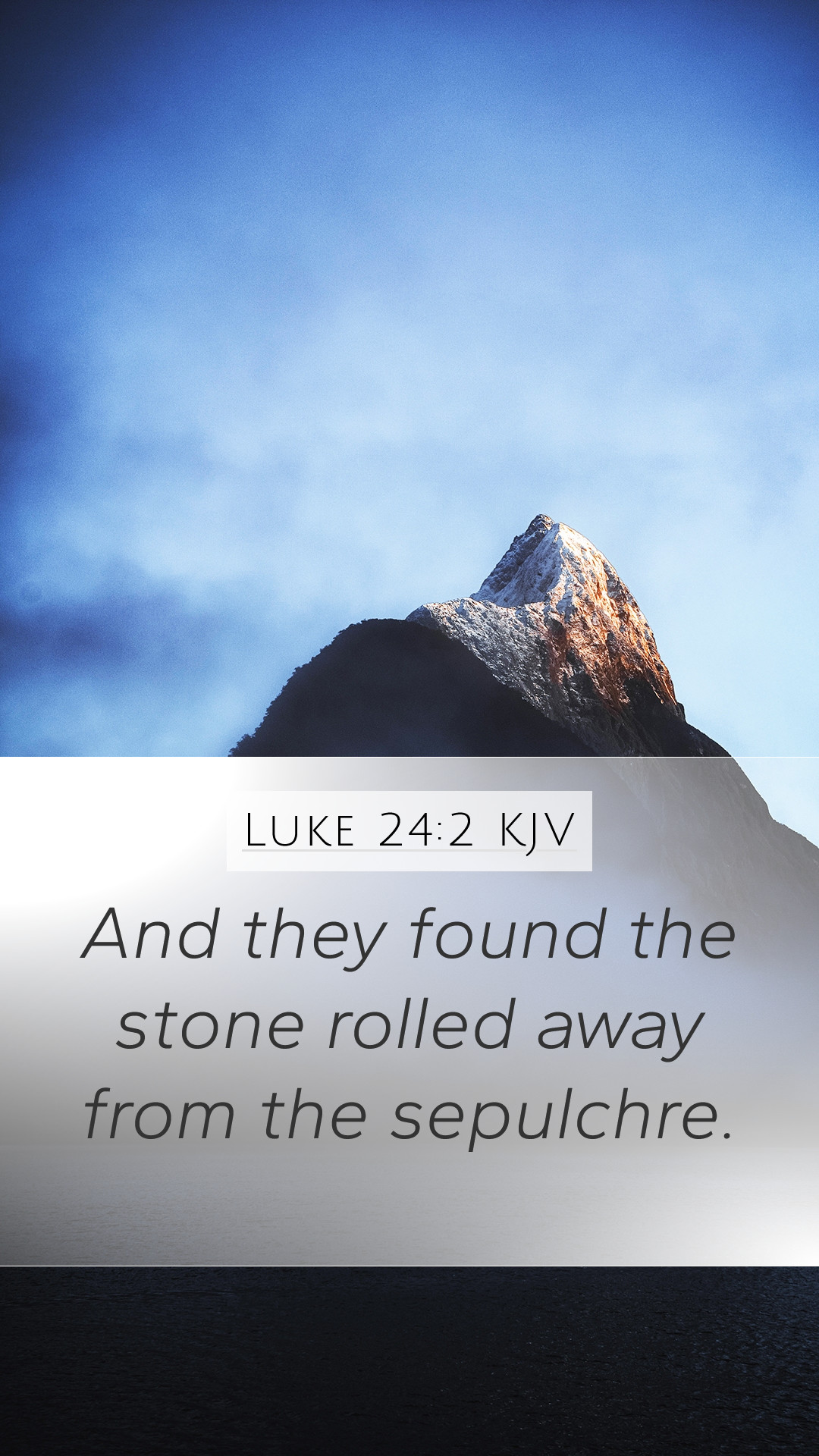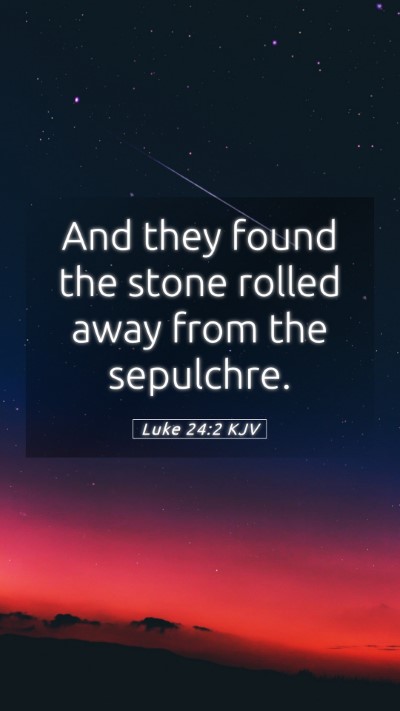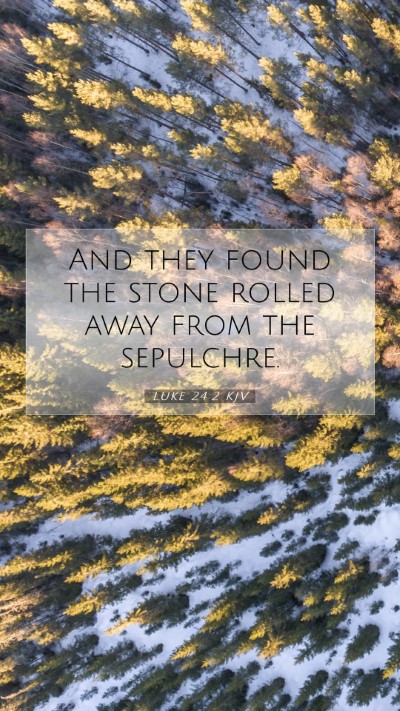Understanding Luke 24:2
The verse Luke 24:2 states: "And they found the stone rolled away from the sepulchre." This passage is pivotal in the narrative of Jesus' resurrection, and its significance can be explored through various commentaries to provide a deeper understanding of Bible verse meanings and interpretations.
Contextual Background
To grasp the meaning of Luke 24:2 fully, it's essential to understand the historical and cultural context of this scripture. This verse occurs following the crucifixion and burial of Jesus Christ, and it is part of the resurrection narrative. The women mentioned in this passage were coming to the tomb to anoint Jesus' body, a Jewish custom for honoring the deceased.
Bible Verse Commentary
- Matthew Henry's Commentary:
Henry emphasizes the importance of the women’s discovery of the empty tomb. He notes that their early visit signifies their devotion and faithfulness to Jesus, even in death. The rolling away of the stone served as a divine act, symbolizing victory over death and the grave, underscoring God's power and the fulfillment of Jesus' predictions about His resurrection.
- Albert Barnes' Notes:
Barnes highlights that the rolled-away stone illustrates the miraculous nature of the resurrection. He suggests that the stone, which was intended to secure the tomb, is a testament to the triumph of Christ over the obstacles of death. The emphasis is on the disbelief of those who had witnessed Jesus’ miracles, as the resurrection became a reality that even the stony barrier could not prevent.
- Adam Clarke’s Commentary:
Clarke notes the significance of the women’s roles in this narrative, emphasizing their dedication. He also discusses the importance of the stone being rolled away, indicating that Jesus did not require assistance to leave the tomb—He rose in His glorified state. This action illustrated the divine authority vested in Christ after His resurrection, highlighting the contrast between human efforts and divine intervention.
Application and Significance
The significance of Luke 24:2 extends beyond its immediate context, providing profound insights for Bible study groups and individual believers. Here, we highlight several applications and insights:
- The act of seeking Jesus, as demonstrated by the women. This can encourage personal and group Bible study as individuals seek to understand Scripture more deeply.
- The symbolism of the stone being removed reminds believers of the hope and new life available through faith in Jesus, emphasizing the theme of resurrection not only in a physical sense but also spiritually.
- This passage prompts reflection on the nature of faith—trusting in what seems impossible, as the resurrection defies human understanding and is a cornerstone of Christian belief.
Related Bible Verses
For a more comprehensive study, here are some Bible cross-references that connect with the themes in Luke 24:2:
- Matthew 28:2: "And behold, there was a great earthquake; for an angel of the Lord descended from heaven and came and rolled back the stone and sat on it."
- Mark 16:4: "And when they looked, they saw that the stone had been rolled away, for it was very large."
- John 20:1: "Now on the first day of the week Mary Magdalene came to the tomb early, while it was still dark, and saw that the stone had been taken away from the tomb."
- Acts 2:24: "Whom God raised up, having loosed the pains of death: because it was not possible that he should be holden of it."
- 1 Corinthians 15:54: "So when this corruptible shall have put on incorruption, and this mortal shall have put on immortality, then shall be brought to pass the saying that is written, Death is swallowed up in victory."
Conclusion
Luke 24:2 is a profound verse that encapsulates the core of the Christian faith—the resurrection of Jesus Christ. Through the combined insights of various public domain commentaries, we gain more than just a simple explanation of what the verse means; we uncover the deep, transformative implications of the resurrection for believers today. As individuals and groups engage in Bible study, this passage reminds us of the joy and hope intertwined with faith, encouraging a deeper understanding of Scripture and its application in daily life.


